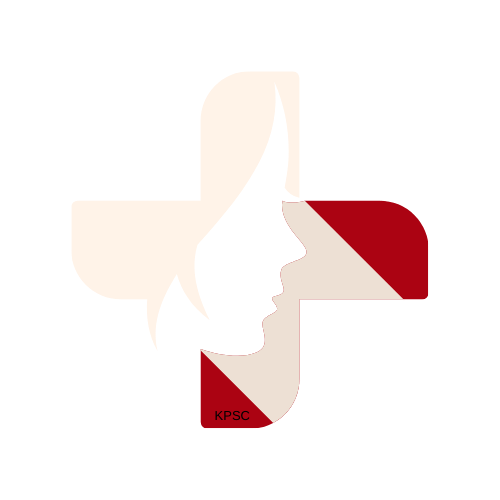Best Middle Eastern Rhinoplasty Clinics in Seoul | Cost & Guide
Restore your nose’s form, function, and confidence.
Middle Eastern rhinoplasty is a cosmetic procedure designed to reshape and refine the nose, specifically tailored to the unique characteristics of Middle Eastern facial features. Whether your concerns are aesthetic or functional, our expert team in Seoul is here to deliver natural-looking and long-lasting results.
Why Is Middle Eastern Rhinoplasty Performed?
- Correcting a Prominent Nasal Bridge
Middle Eastern individuals often have a more prominent nasal bridge, which can create an imbalance in facial proportions. Middle Eastern rhinoplasty can reduce or contour the bridge for a more refined profile while maintaining the ethnic characteristic of the nose. - Refining the Nasal Tip
In some cases, the nasal tip may be rounded or drooping. Middle Eastern rhinoplasty can enhance the nasal tip by lifting it, making it more defined, or refining its shape for better symmetry with the rest of the face. - Narrowing Wide Nostrils
Many people of Middle Eastern descent have wider nostrils. Rhinoplasty can narrow the nostrils without compromising the natural look, creating a more proportionate and aesthetically pleasing result. - Restoring Facial Balance
Middle Eastern rhinoplasty is often performed to restore balance and proportion to the nose, making it more harmonious with the rest of the facial features without completely altering or Westernizing the appearance.
Benefits of Middle Eastern Rhinoplasty
- Preserved Ethnic Features: Middle Eastern rhinoplasty focuses on enhancing the nose while maintaining or subtly refining ethnic features.
- Improved Nasal Aesthetics: The procedure can reduce a prominent bridge, refine the nasal tip, or narrow the nostrils for a more balanced and defined appearance.
- Facial Harmony: The surgery restores facial balance by ensuring the nose complements the rest of the face.
- Increased Confidence: Many patients report a significant boost in confidence and self-esteem after undergoing Middle Eastern rhinoplasty, feeling more comfortable with their appearance.
- Customizable Results: The procedure can be tailored to suit your individual goals, whether you're seeking more definition, a refined nasal profile, or improved symmetry.
What to Expect During the Procedure
Middle Eastern rhinoplasty is usually performed under general anesthesia to ensure the patient’s comfort and safety during the surgery. The procedure can take 1 to 3 hours, depending on the complexity of the changes needed.
Key Steps of the Middle Eastern Rhinoplasty Procedure:
- Consultation & Planning
The first step is a consultation where the surgeon will assess your nasal anatomy, discuss your aesthetic goals, and understand your cultural preferences. The surgeon will then create a personalized treatment plan that aligns with your vision while preserving your ethnic identity. - Incision Placement
There are two main types of rhinoplasty techniques: - Open Rhinoplasty: An incision is made across the columella (the small strip of tissue between the nostrils), which gives the surgeon better visibility and access to reshape the nasal structures.
- Closed Rhinoplasty: All incisions are made inside the nostrils, leaving no visible scarring. This approach is used for less complex procedures.
- Reshaping the Nose
The surgeon will work on reshaping the nasal bridge, tip, or nostrils as needed. This may involve removing or sculpting cartilage, grafting cartilage from other areas (such as the ear or rib), or reshaping the nasal bones to achieve the desired shape and profile. The aim is to create a more balanced and refined nose without losing the unique characteristics of your ethnic features. - Closure & Dressing
Once the reshaping is complete, the incisions are closed with fine sutures, and a nasal splint or dressing is applied to help support the nose during the healing process.
Middle Eastern rhinoplasty is usually performed on an outpatient basis, allowing you to return home the same day after the surgery.
Recovery & Aftercare
Recovery from Middle Eastern rhinoplasty can take a few weeks, but the final results take several months to fully appear. Here’s what you can expect during the recovery process:
- Recovery Time: Most patients can return to light activities within 1 to 2 weeks, though strenuous activities should be avoided for at least 4 to 6 weeks.
- Swelling and Bruising: Swelling and bruising around the nose and eyes are common, especially in the first week after surgery, but it should subside within 2 to 3 weeks.
- Nasal Splint or Bandages: A nasal splint may be applied to support the newly shaped nose during the initial healing phase. Avoid any pressure or contact with the nose during the recovery period.
- Follow-up Appointments: Follow-up appointments are essential to monitor healing progress and ensure that the results meet your expectations.
- Final Results in 6 to 12 Months: The final results of Middle Eastern rhinoplasty will be fully visible within 6 to 12 months, as the swelling completely resolves and the nose settles into its new shape.
By following post-operative care instructions and attending follow-up visits, you can ensure optimal results.
Cost of Middle Eastern Rhinoplasty in Korea
The cost of Middle Eastern rhinoplasty in Korea varies based on the complexity of the procedure, the surgeon’s experience, and the clinic’s location. On average, the cost for Middle Eastern rhinoplasty in Korea ranges from:
- Middle Eastern Rhinoplasty Surgery: ₩4,000,000 – ₩8,500,000 KRW (Approx. $3,200 – $6,800 USD)
- Consultation Fee: ₩50,000 – ₩100,000 KRW (Approx. $40 – $80 USD)
- Post-Surgery Care & Follow-up: Additional costs may apply depending on follow-up care, medications, and post-surgical garments.
Consulting with an experienced surgeon is essential to get an accurate estimate based on your specific needs and desired outcomes.
Schedule Your Consultation
If you're considering Middle Eastern rhinoplasty in Seoul, our experienced surgeons are here to guide you every step of the way. Schedule a consultation today and discover how expert Middle Eastern rhinoplasty can enhance your natural features with cultural sensitivity and confidence.
Transform Your Confidence
Experience personalized care and exceptional results with our board-certified plastic surgeons.
Contact Us
We will get back to you as soon as possible.
Please try again later.

